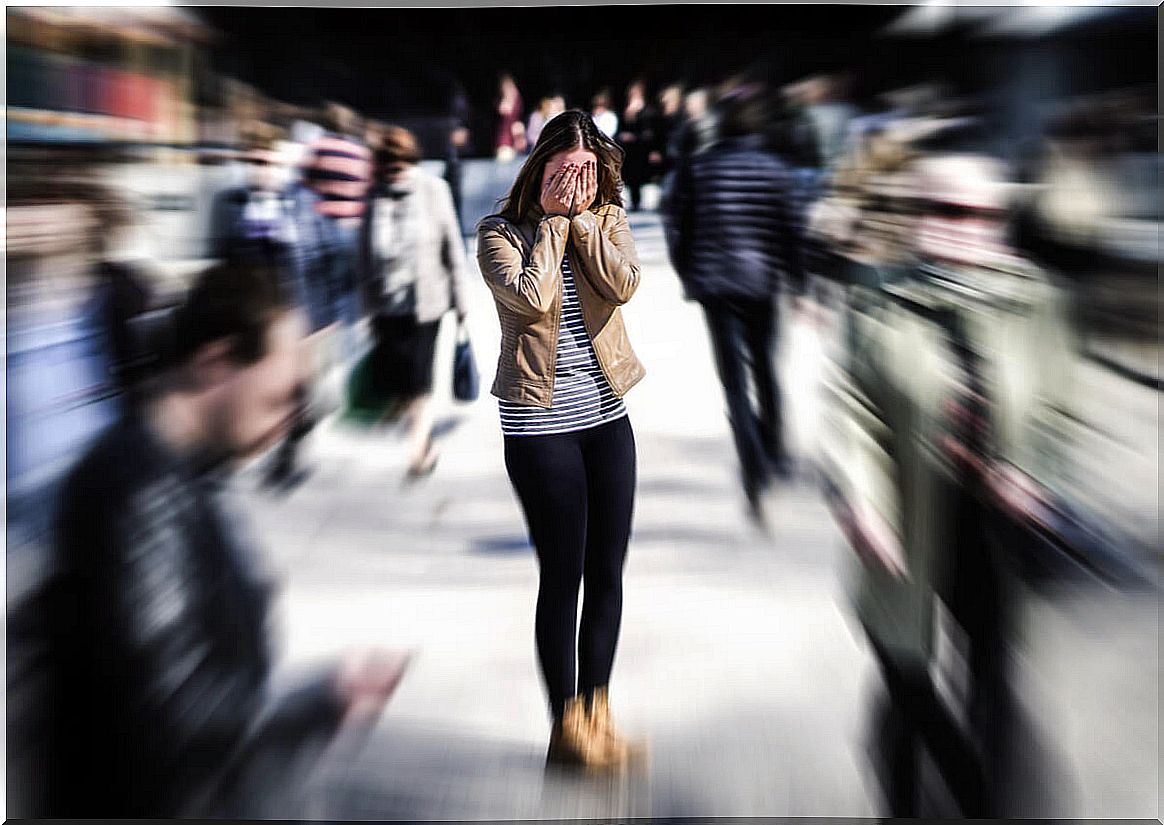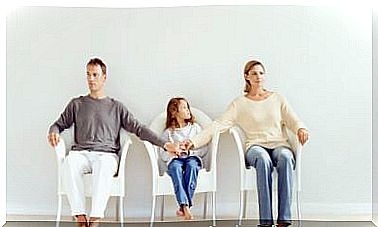What Are The Symptoms Of Agoraphobia?
The symptoms of agoraphobia have been described by numerous entities, since it is a complex disease that, in each person, manifests with certain peculiarities. If we had to classify it, we would say that it falls within anxiety disorders.
People who suffer from it suffer from anxiety or exaggerated fear of places or situations in which they feel helpless, trapped or ashamed. For example, open spaces, crowded places, or even public transportation.
The problem is that agoraphobia symptoms vary considerably, since this pathology encompasses a set of phobias that sometimes overlap each other. In this article we explain the most frequent manifestations.
Symptoms of agoraphobia according to DSM-V
The DSM-V is the Diagnostic and Statistical Manual of Mental Disorders, updated in 2013. It is the tool that psychologists and psychiatrists usually use to identify different pathologies. According to this manual, the most common agoraphobia symptoms are the following:
- Feeling anxious in places where it may be difficult or embarrassing to escape . These people are often afraid of having a panic attack and, even more so, of it happening to them in places where they cannot get help. The places that cause the most fear are those outside the home and are very crowded, such as public transport or supermarkets.
- Fear causes avoidance behaviors to develop. For example, if a symptom of agoraphobia is anxiety when riding a bus, these people try never to do it. They change habits for fear of having a crisis.
- In order to diagnose agoraphobia, it is usually required that the anxiety attacks be repeated or that a very intense worry arises as a result of one of them. That is, that person feels panic about the probability of suffering another or that they change their behavior from that moment on.
Furthermore, it is important to note that other mental disorders must be excluded in order to establish a certain diagnosis. This is because, on many occasions, certain specific phobias tend to be confused with agoraphobia, such as social phobia.

Examples of agoraphobia symptoms
The symptoms of agoraphobia, as we have noted, vary from person to person. This disorder often manifests itself as a fear of being outdoors, especially when alone. However, it can also occur indoors, such as cinemas or theaters.
Another characteristic feature is the fear of experiencing an embarrassing situation. For example, falling in public or even having an anxiety attack in front of others. In addition, the fear is usually excessive and very intense.
The problem is that all this ends up affecting each of the areas of the patient’s life. Little by little avoidance behaviors are created, as we have already mentioned. In this way, if someone is afraid of public transport, perhaps to go to work or to carry out any leisure activity, they are conditioned.
Other considerations about agoraphobia
According to an article published in the journal Pharmacy Professional, agoraphobia symptoms usually appear in late adolescence or early adulthood. Most of these people increasingly take refuge at home, coming out only for what is necessary.
There is a greater tendency for it to appear in women than in men. Unfortunately, it is often accompanied by depressive symptoms, obsessive thoughts, and social phobia.
If this disease is not treated, it ends up becoming chronic and feeding back, becoming disabling. In addition, we must bear in mind that, after all, it is a panic disorder. Therefore, it is also accompanied by physical symptoms.
An article in the journal of Psychopathology and Clinical Psychology reports that when a crisis occurs, the heart rate accelerates and there may be a feeling of suffocation. Sweating increases, there is discomfort and pressure in the chest that lead, in extreme cases, to dizziness and fainting. Anxiety leads to a feeling of loss of control and, in some cases, fear of death.

To remember about agoraphobia and its symptoms
What we must bear in mind is that agoraphobia is a complex disorder that can show itself in different ways. These people are afraid of specific situations, such as using public transport or going to places where they cannot be helped in the event of a crisis.
Therefore, it is essential that they receive psychological support and appropriate treatment. Otherwise, it is possible that the disorder becomes chronic and ends up defining the lives of these people, preventing them from carrying out their routine normally.









